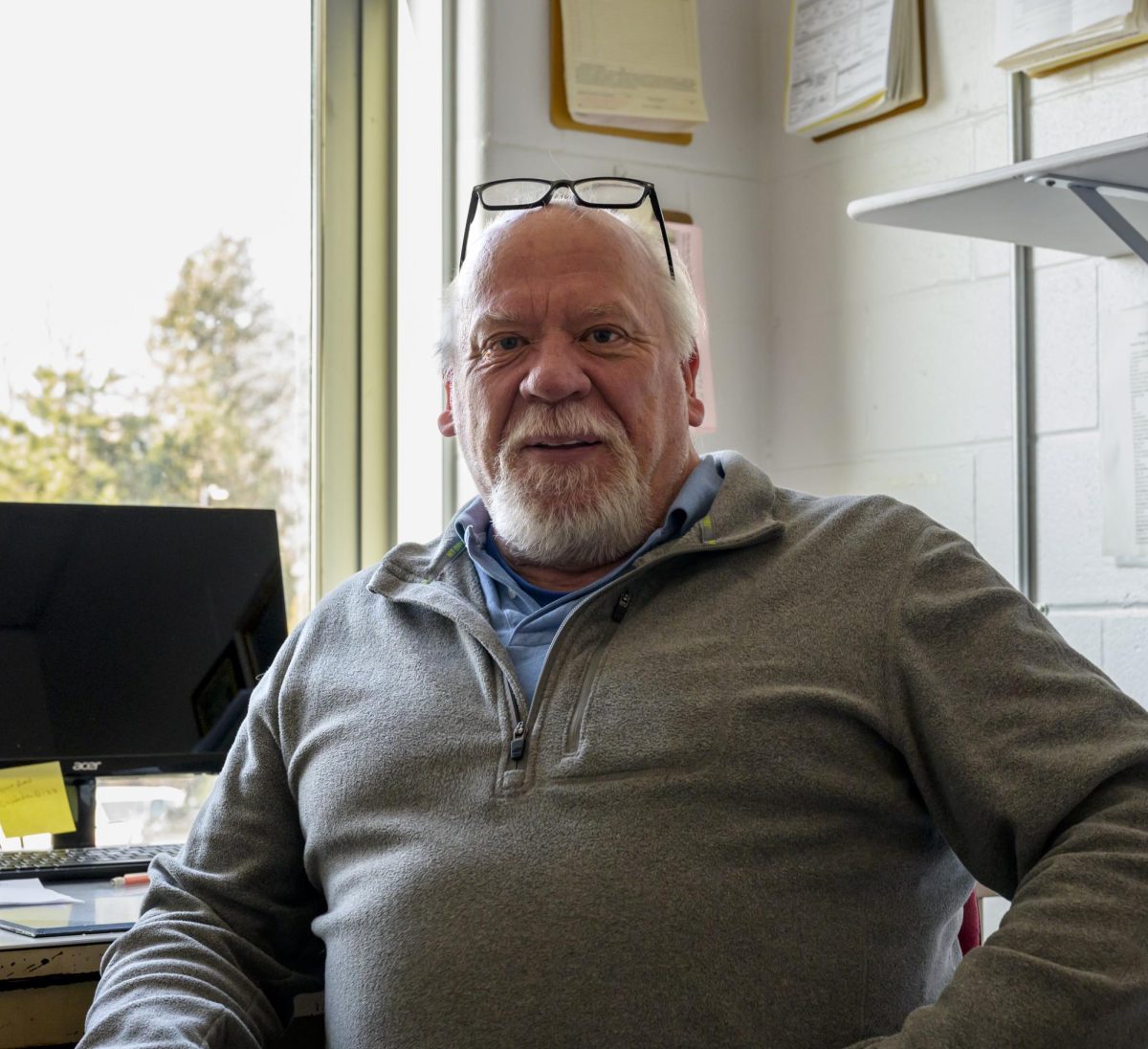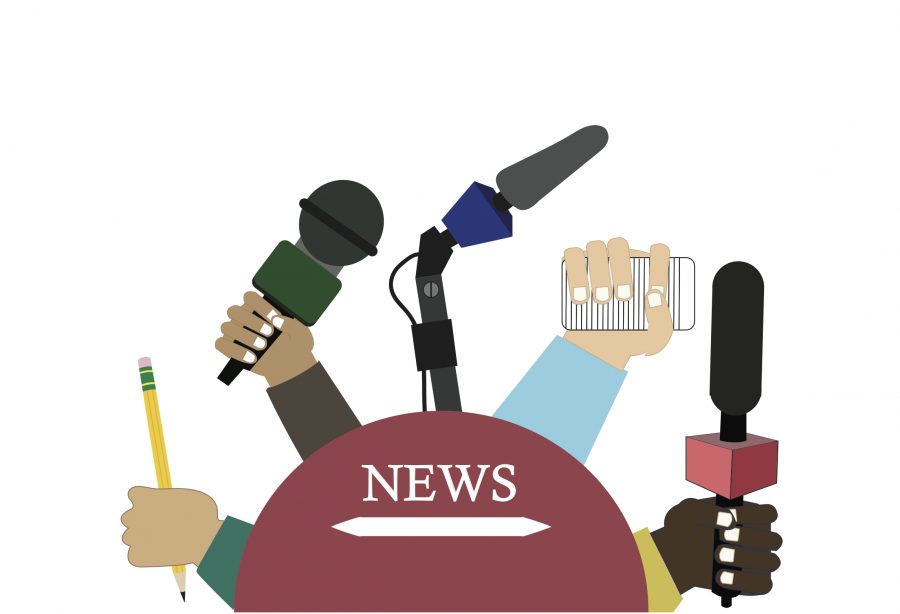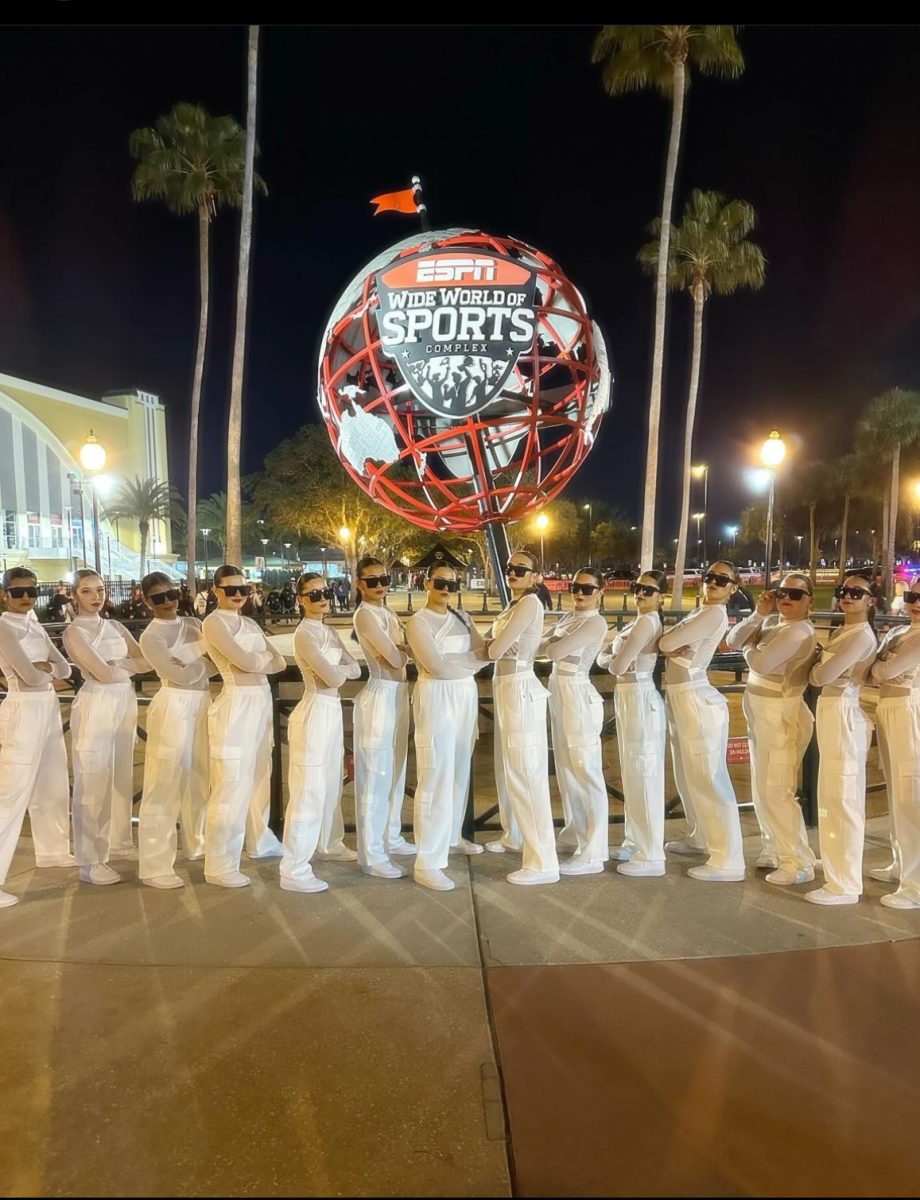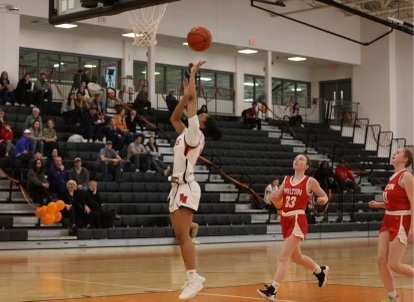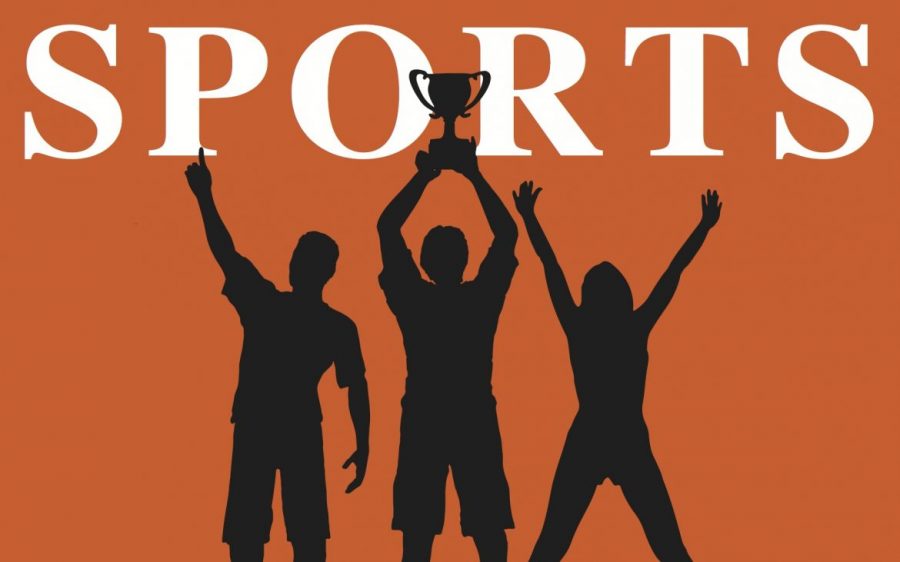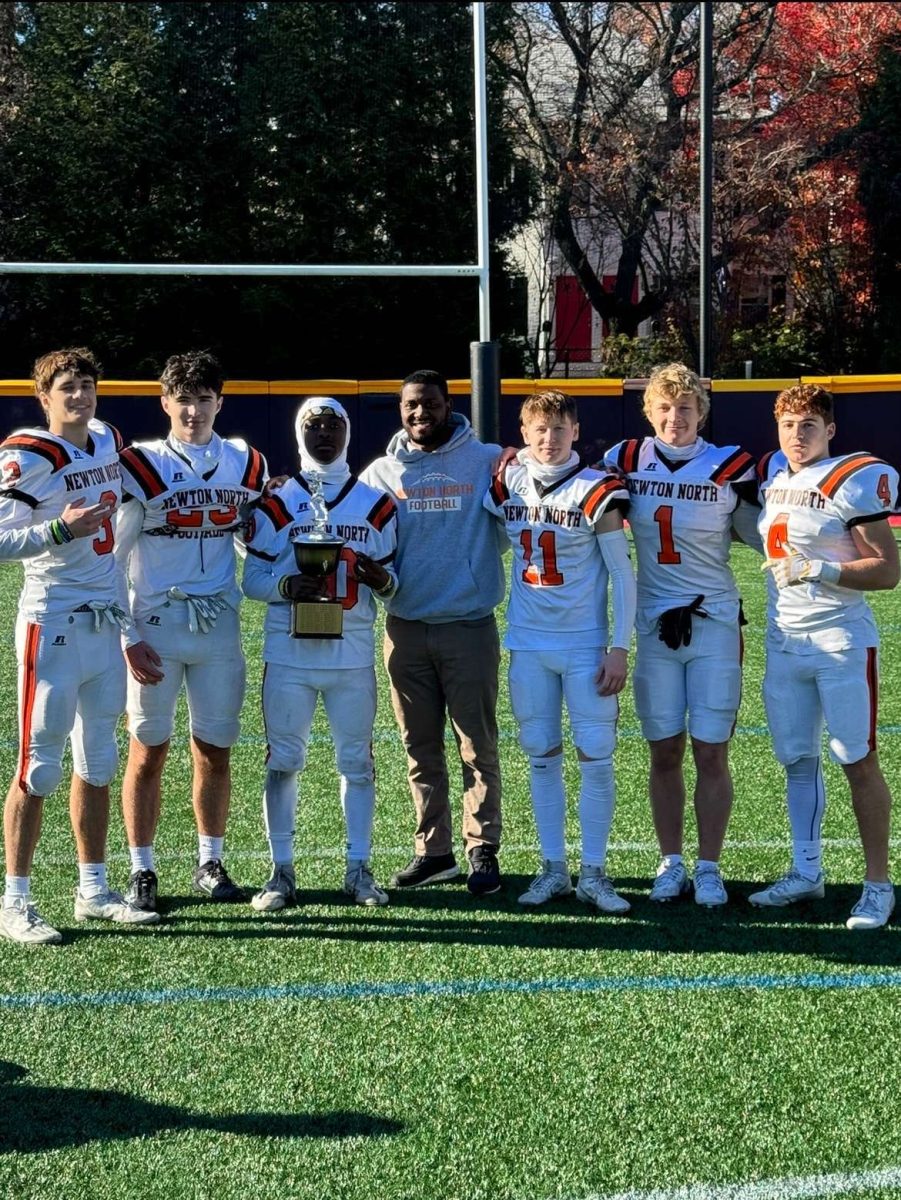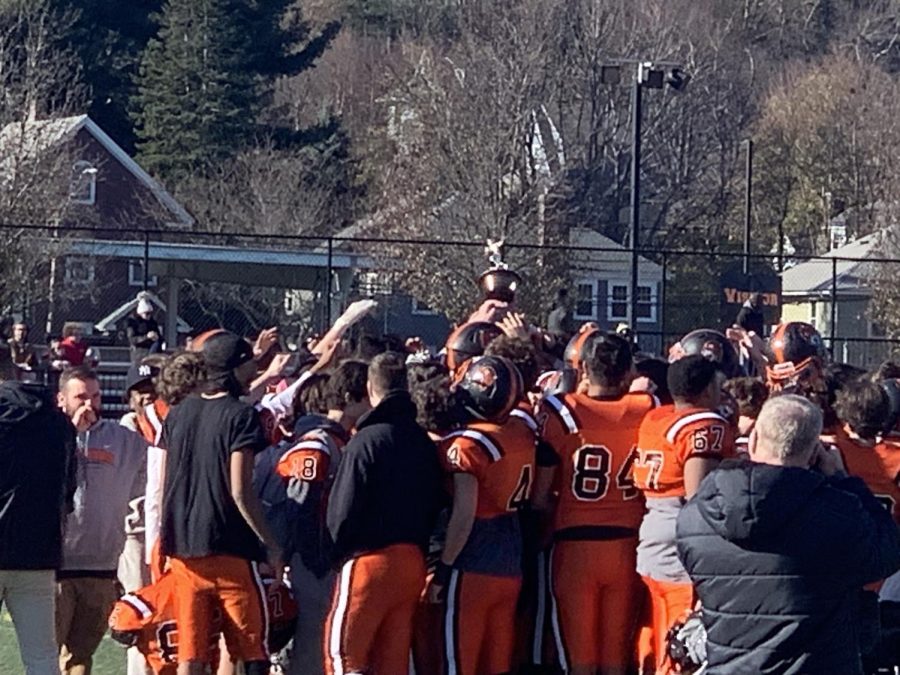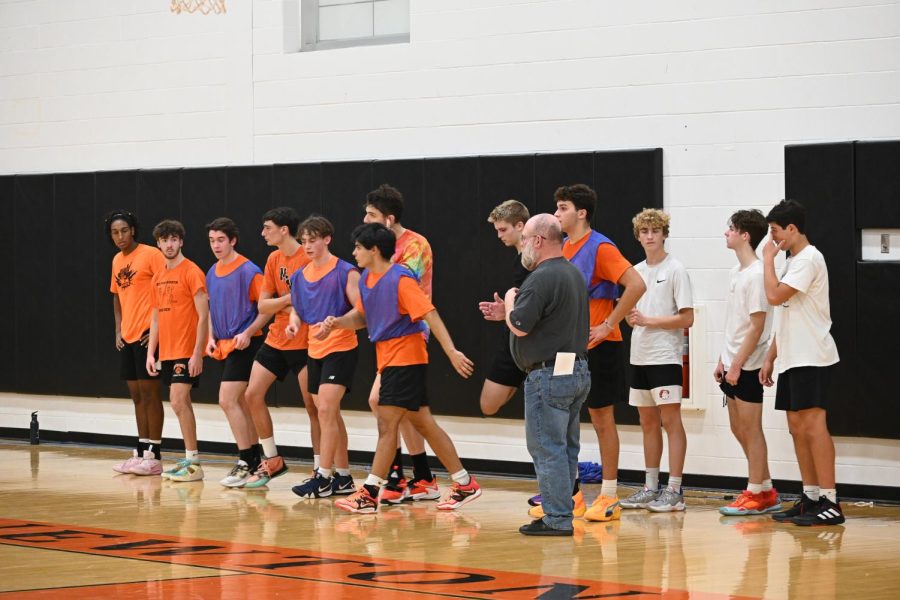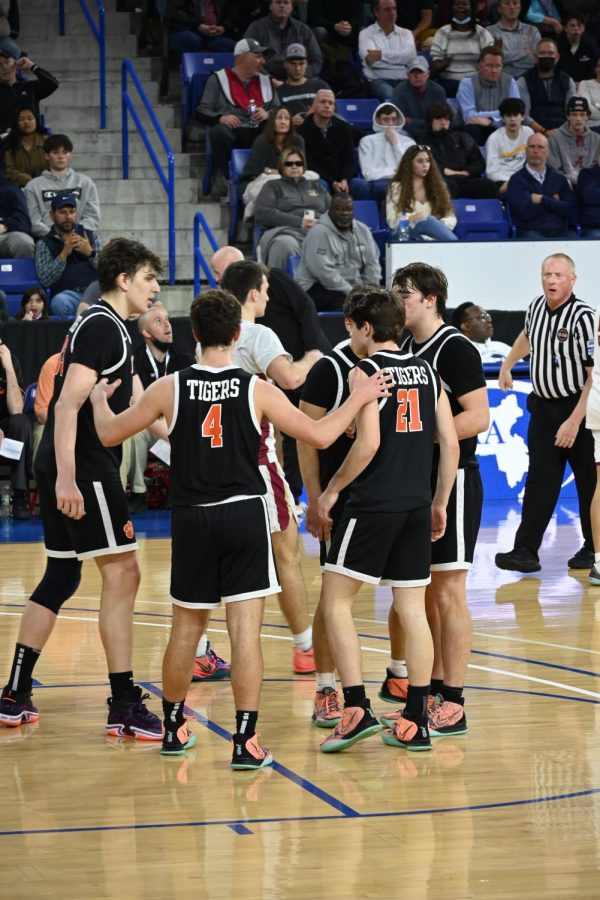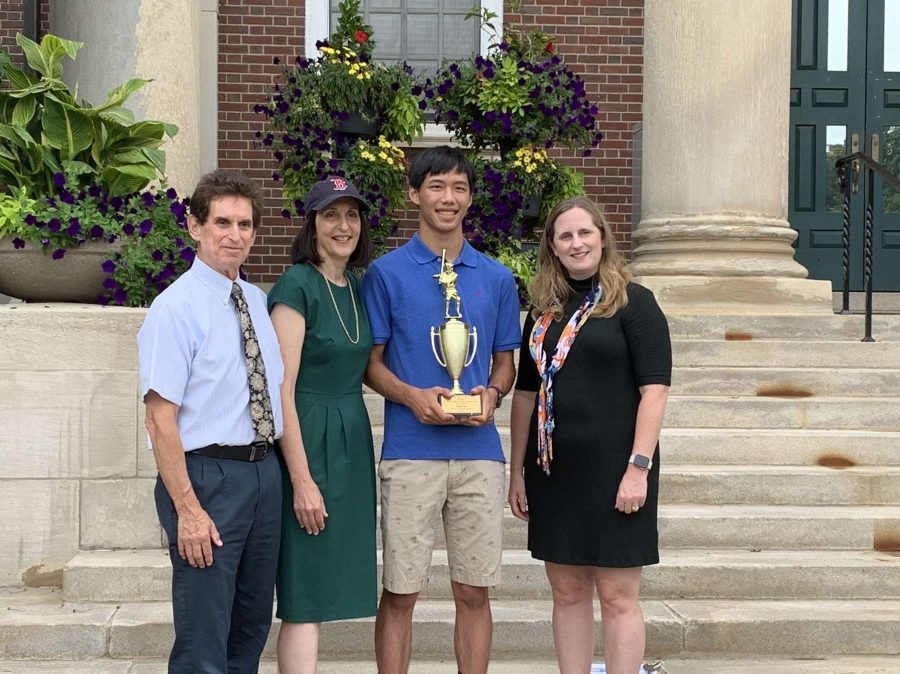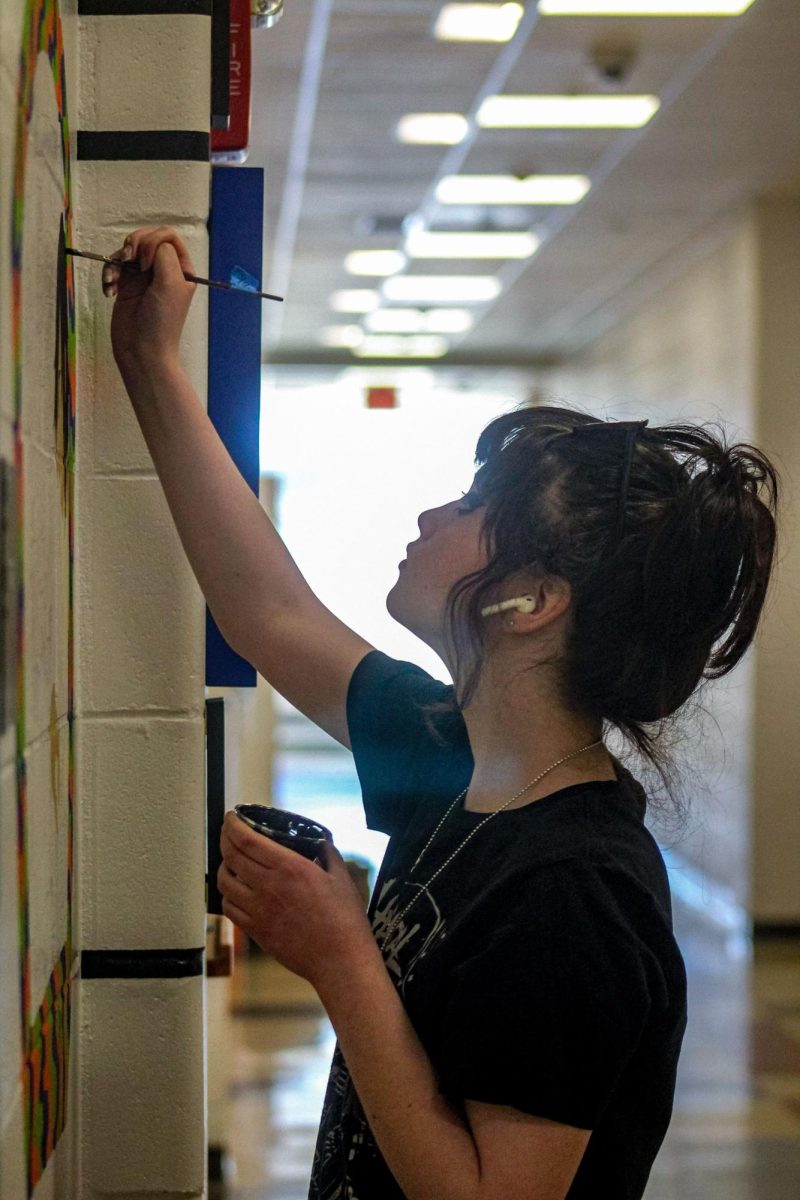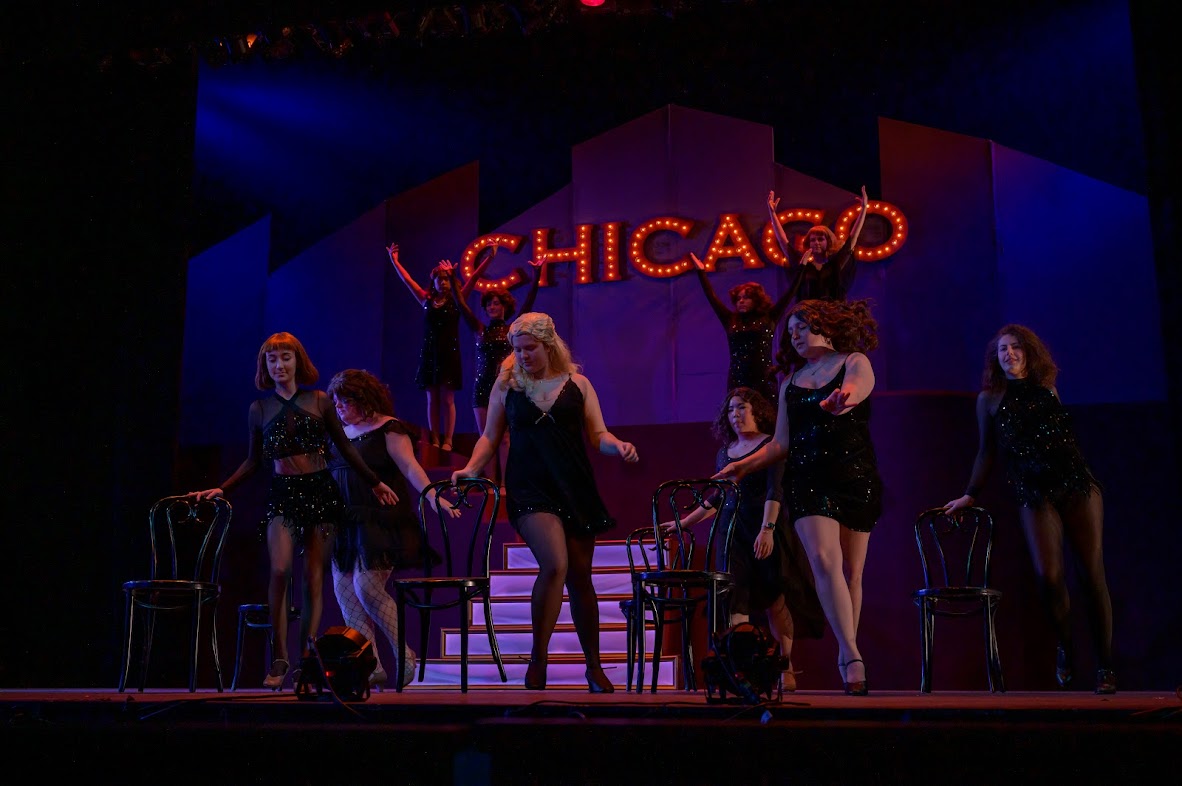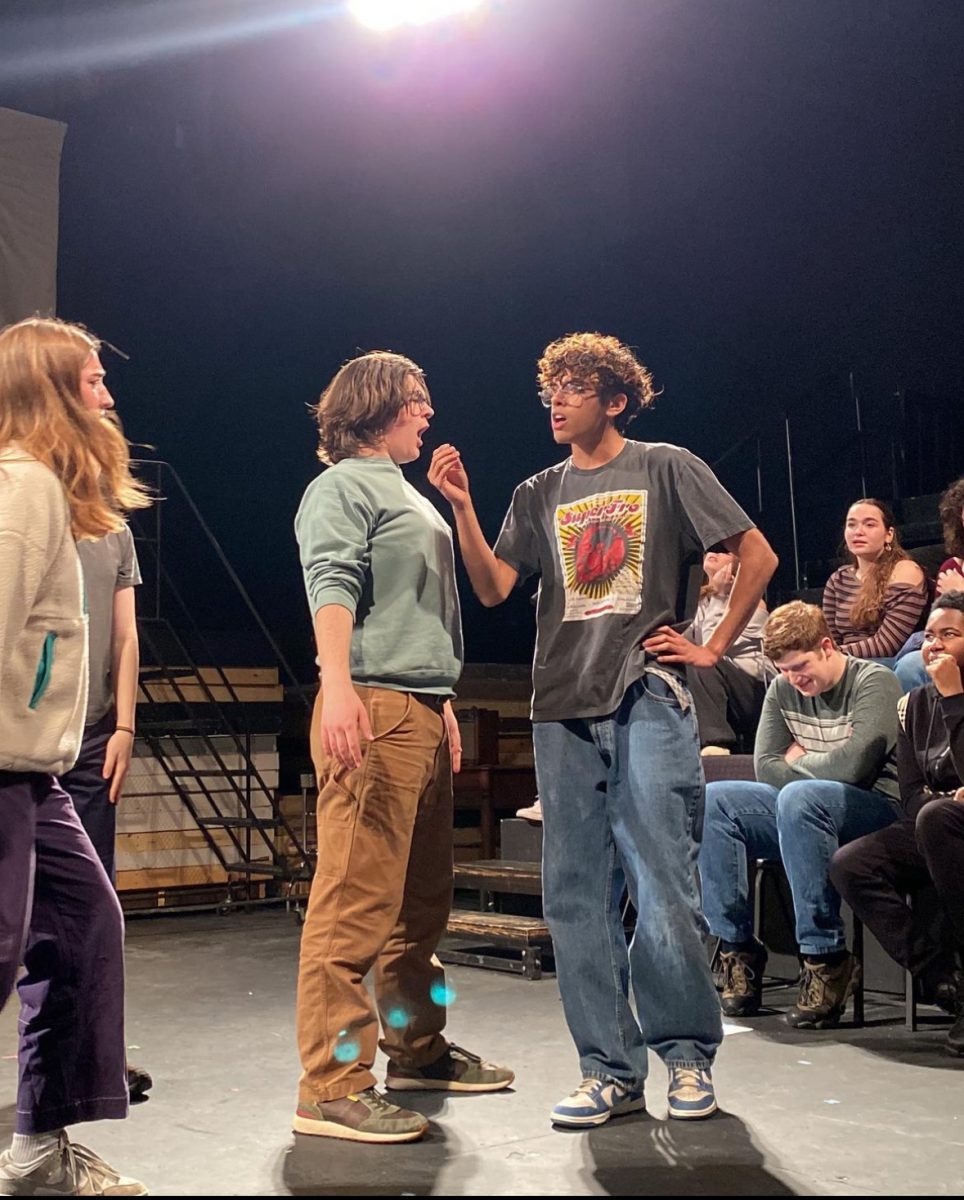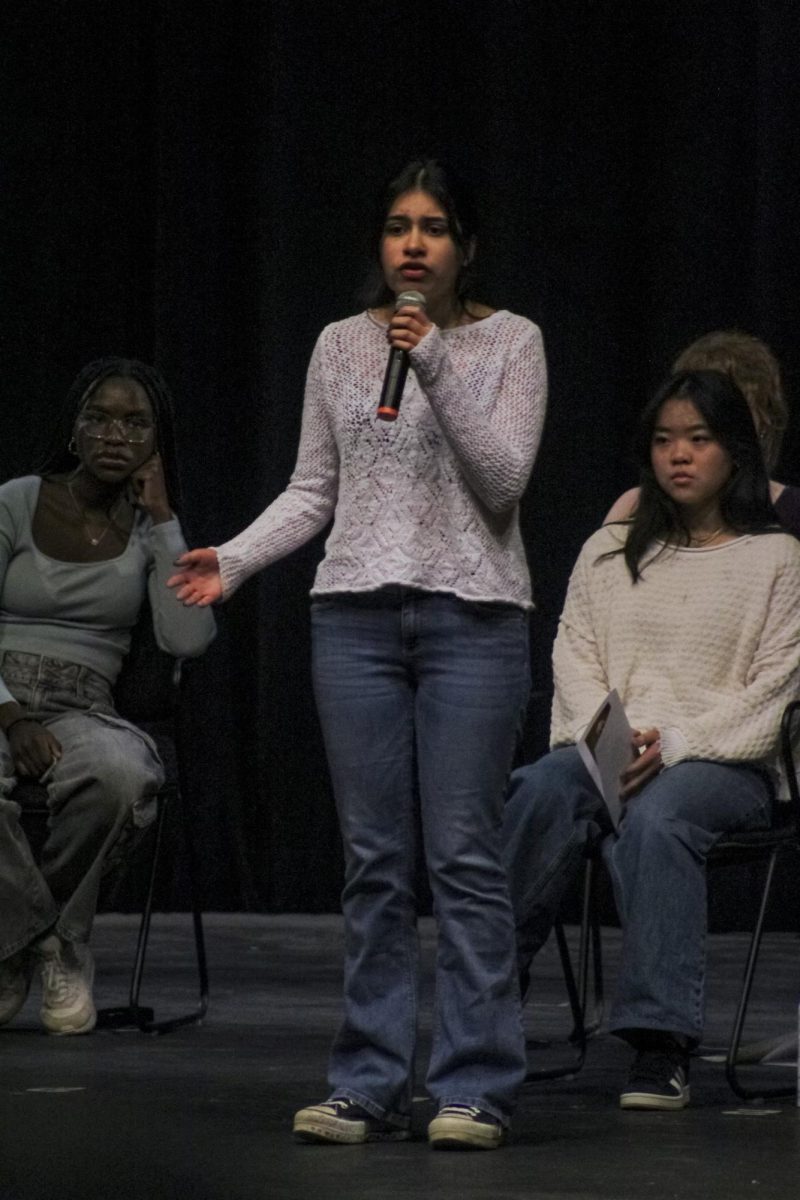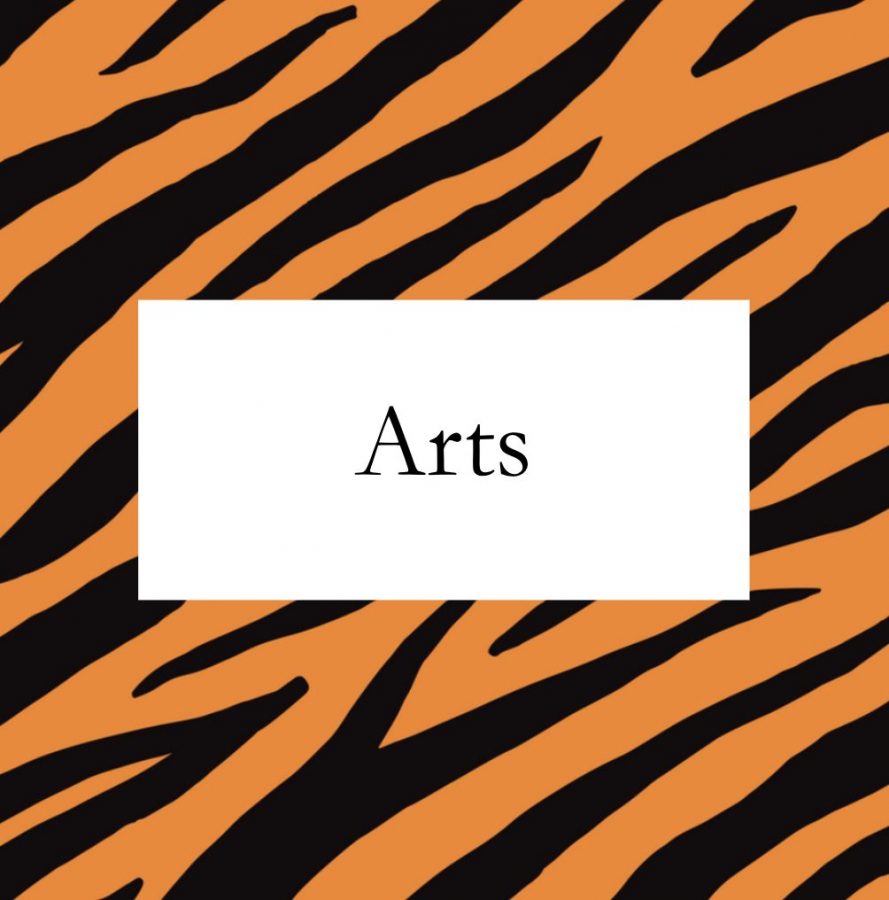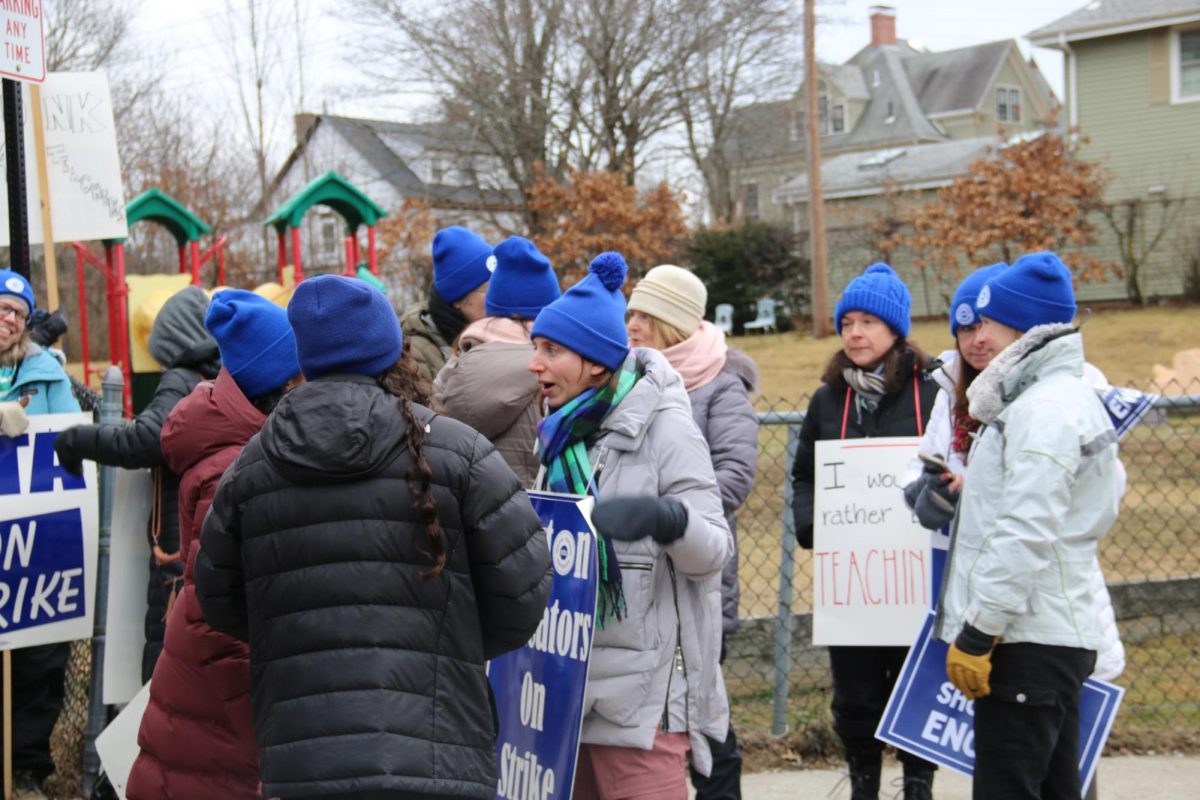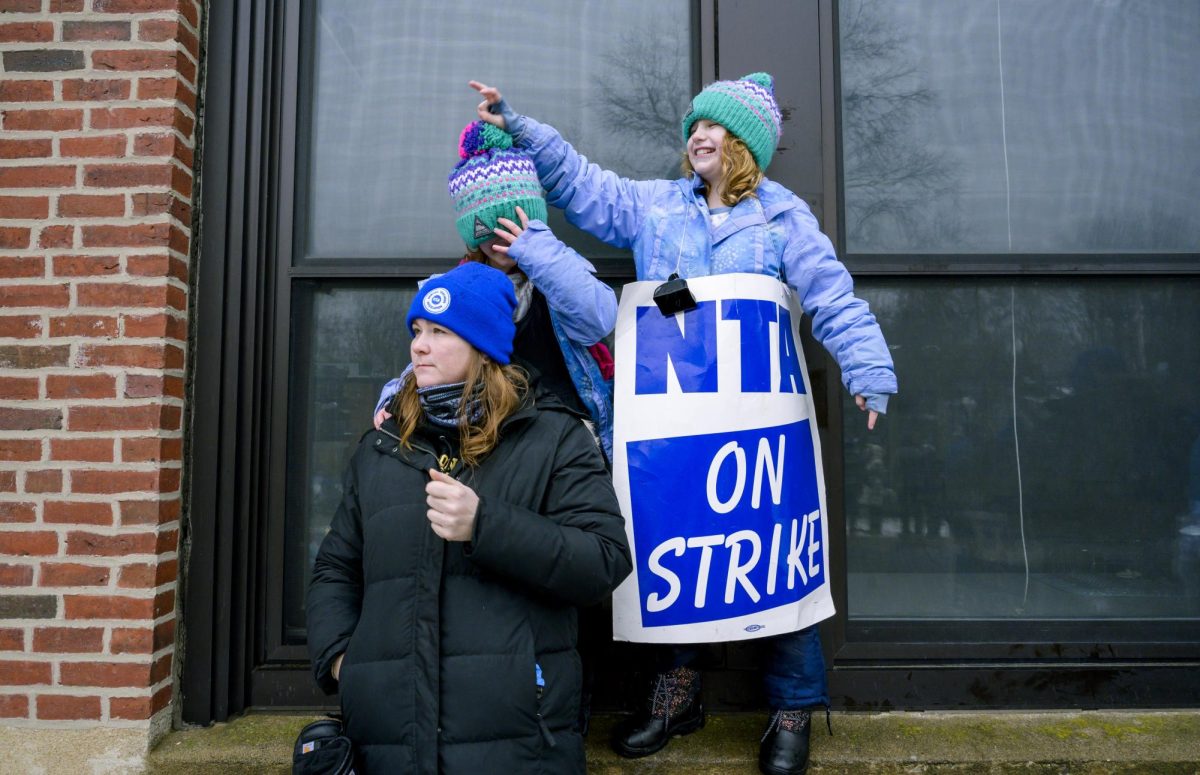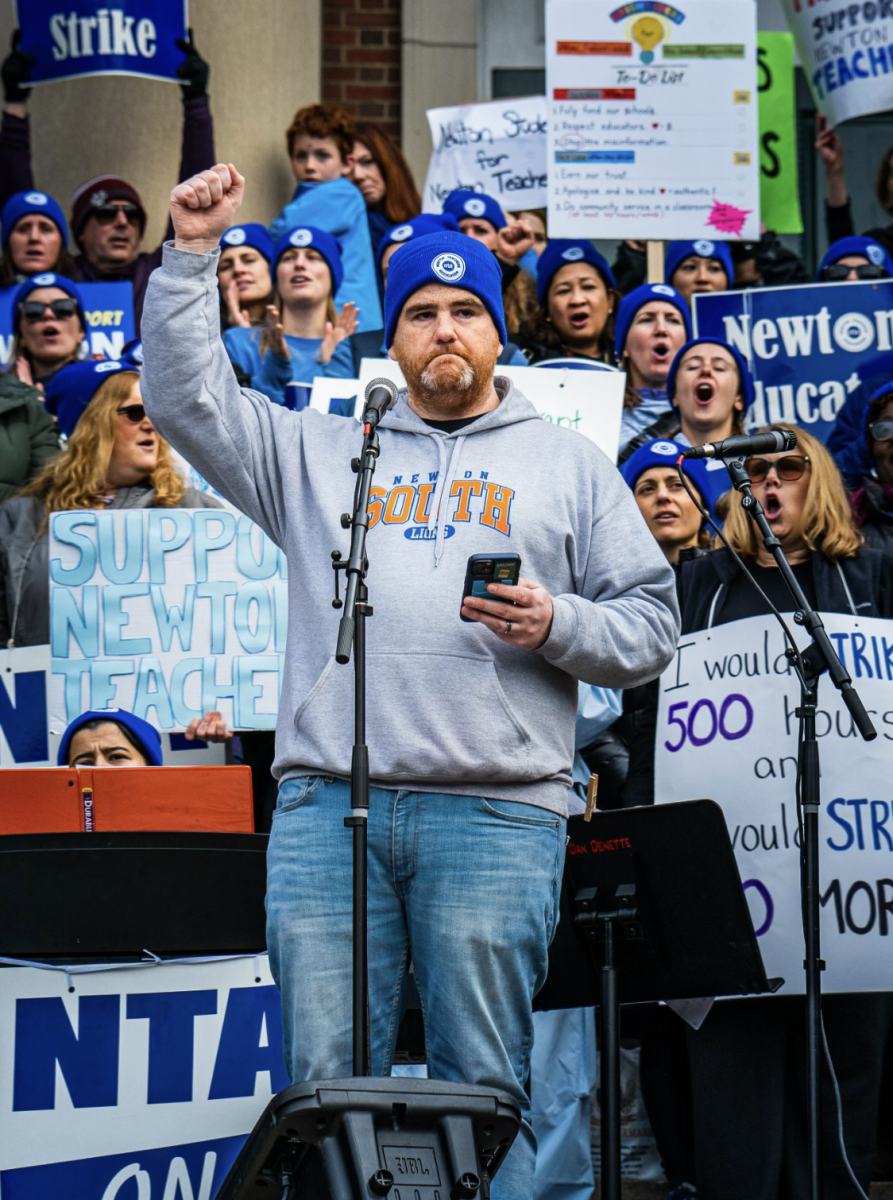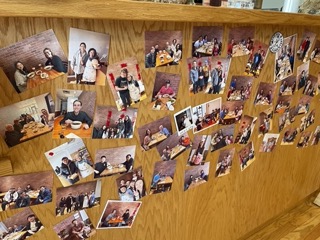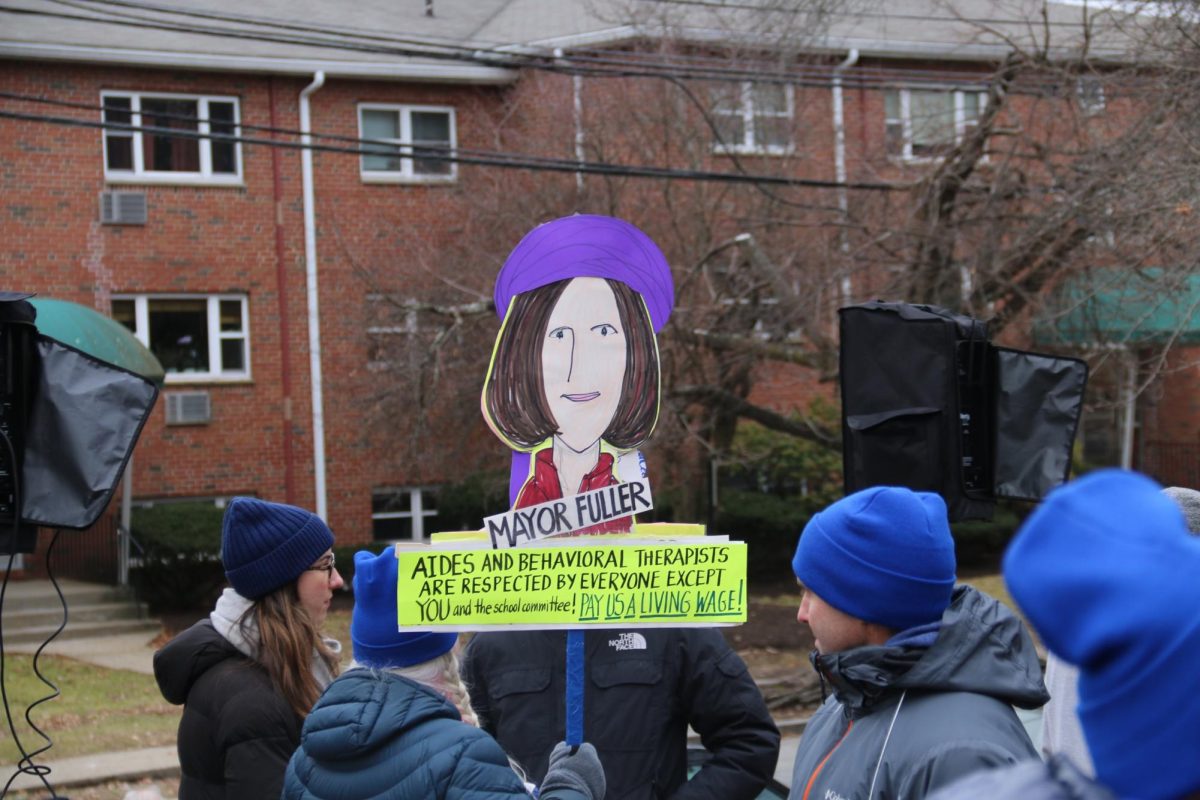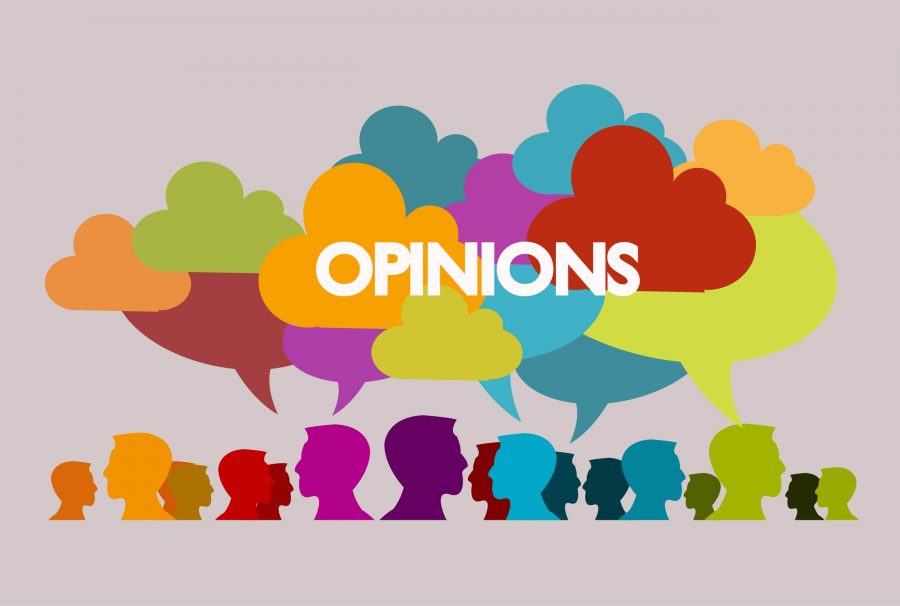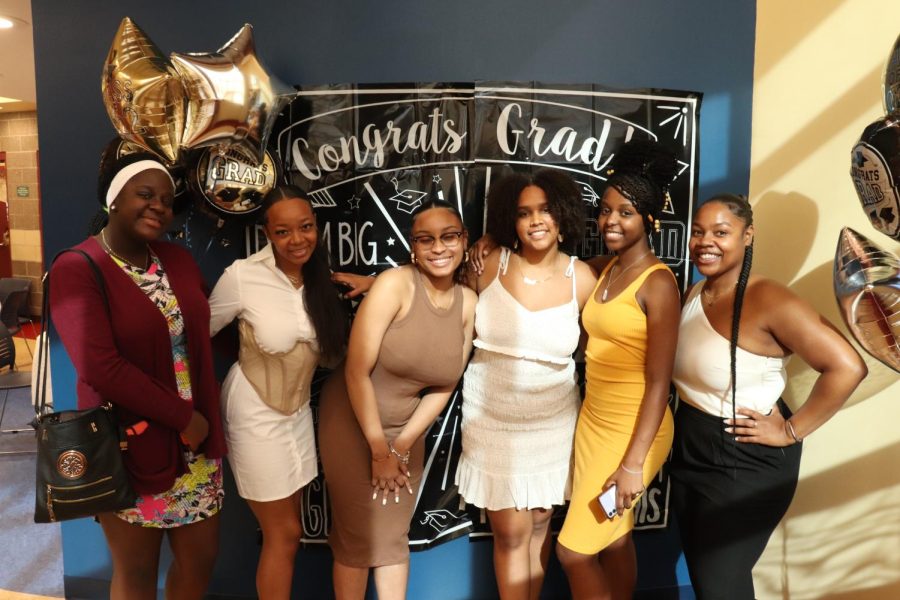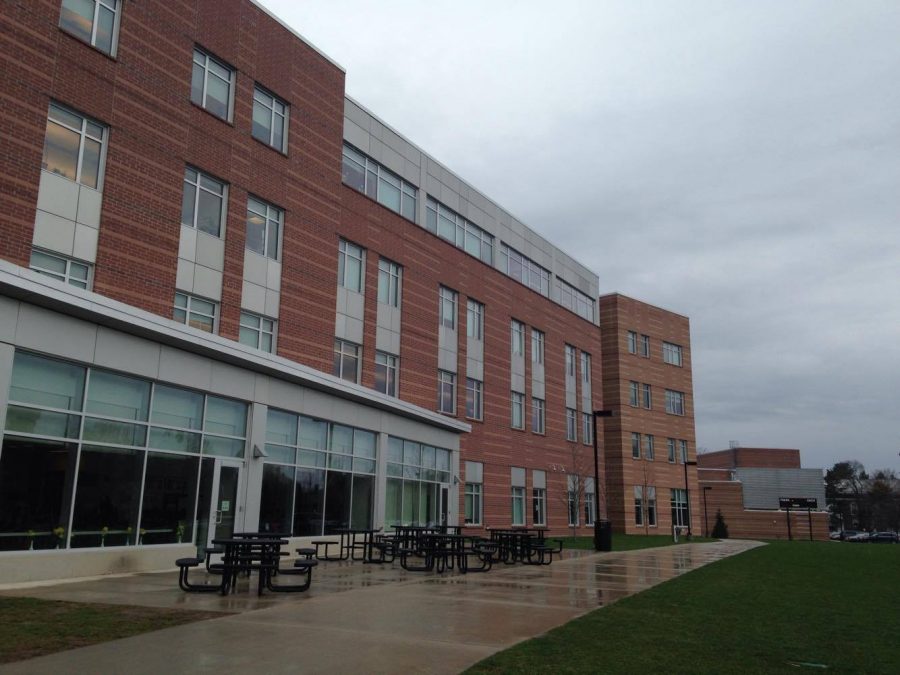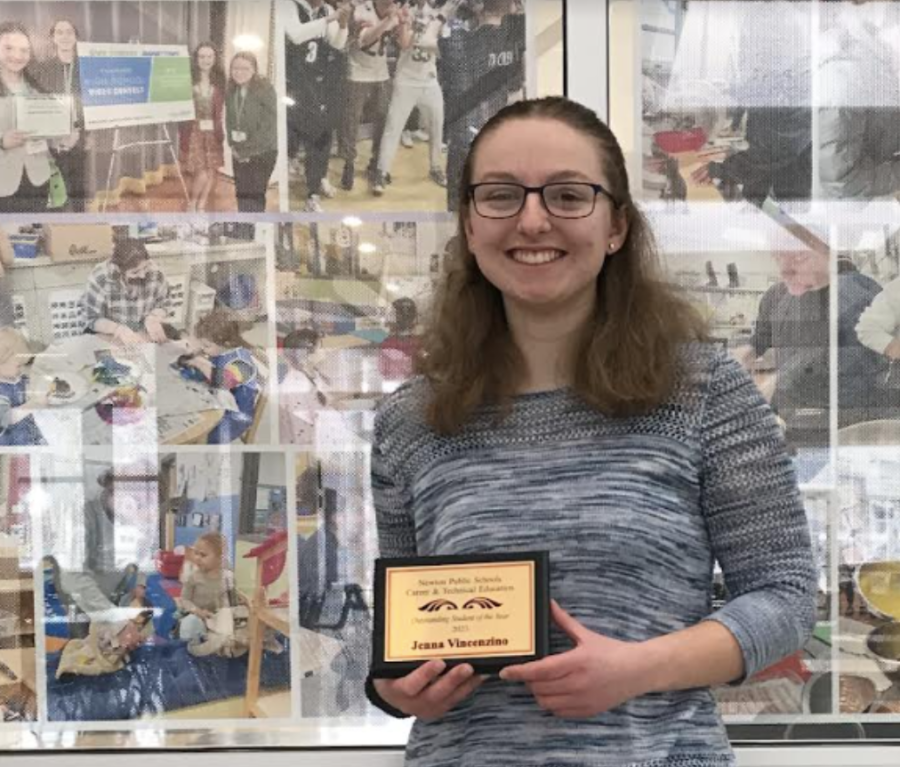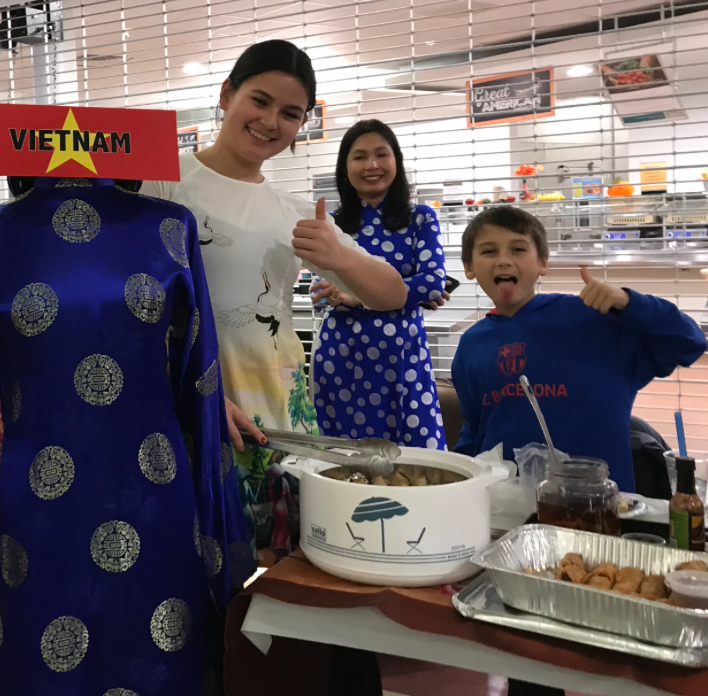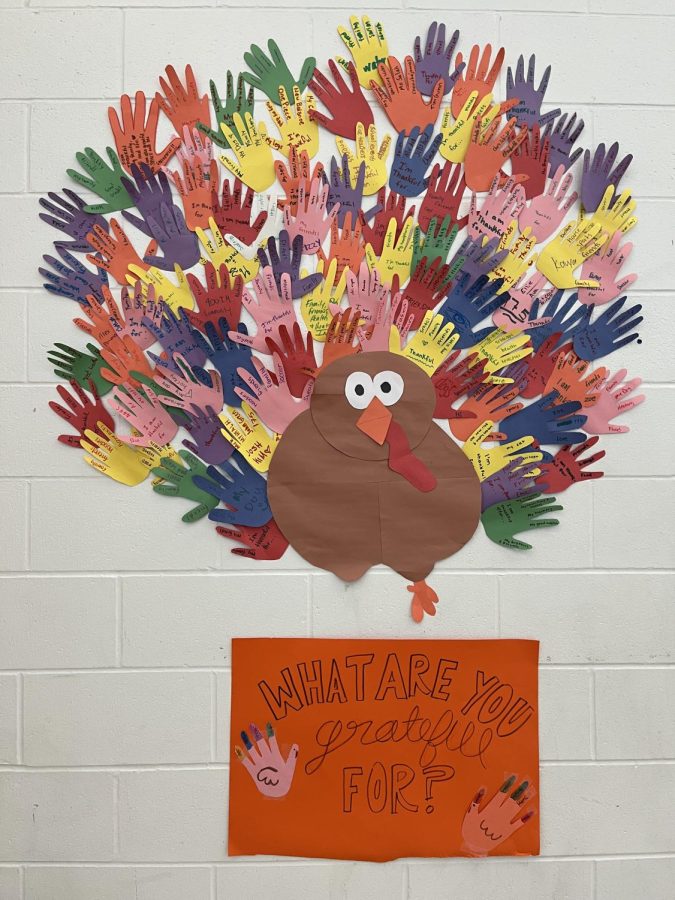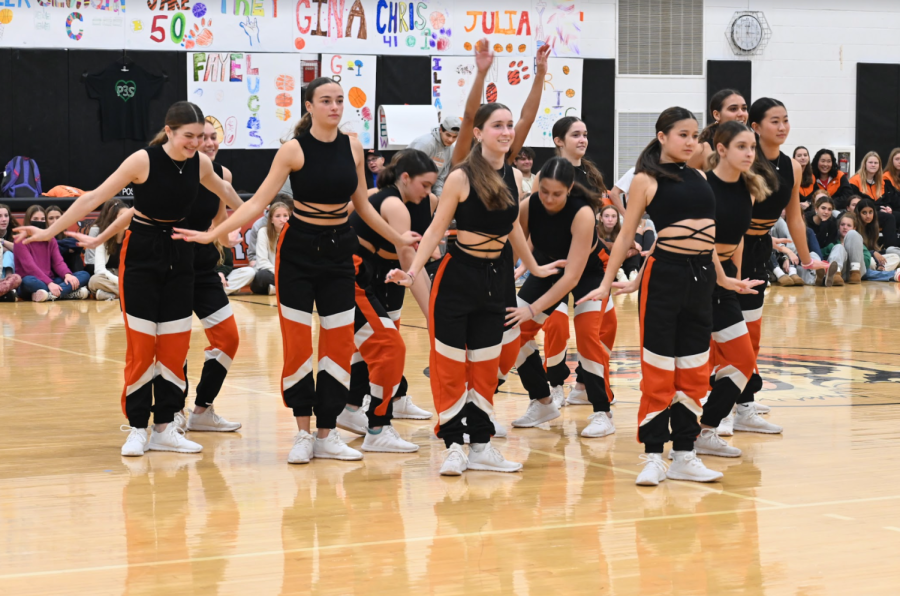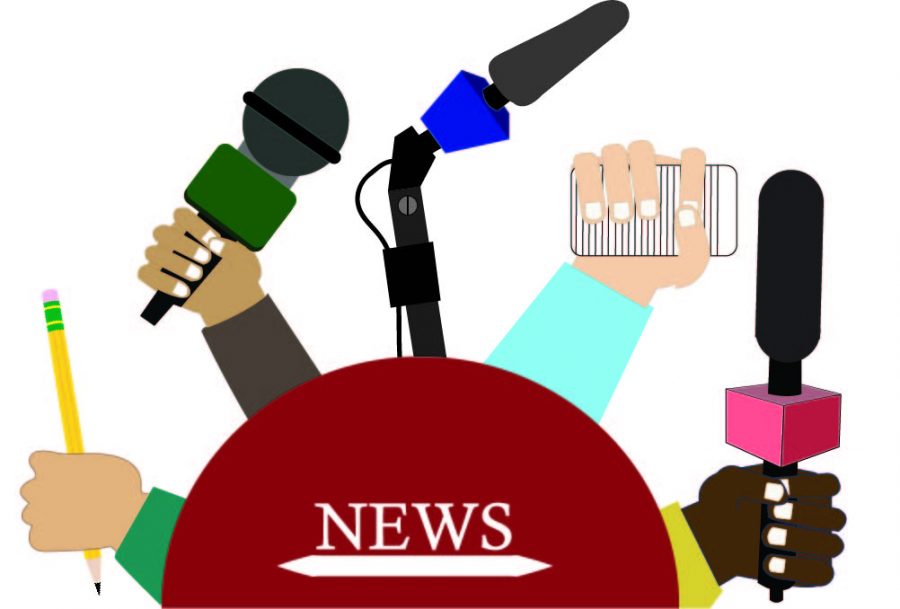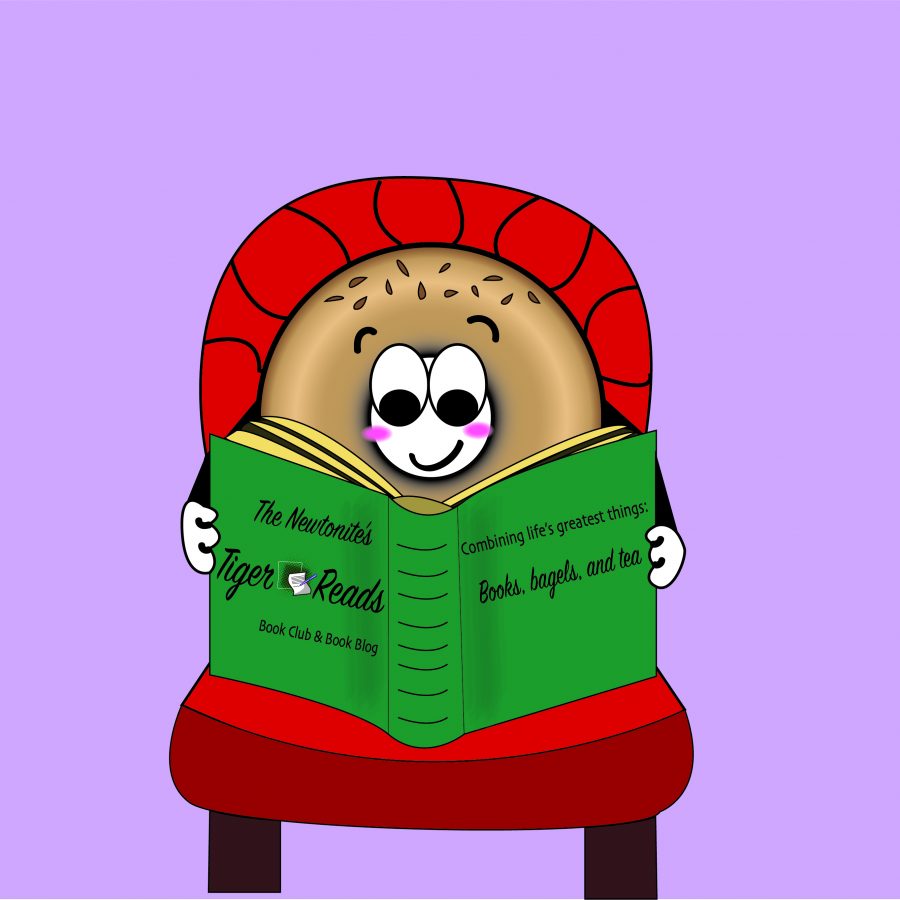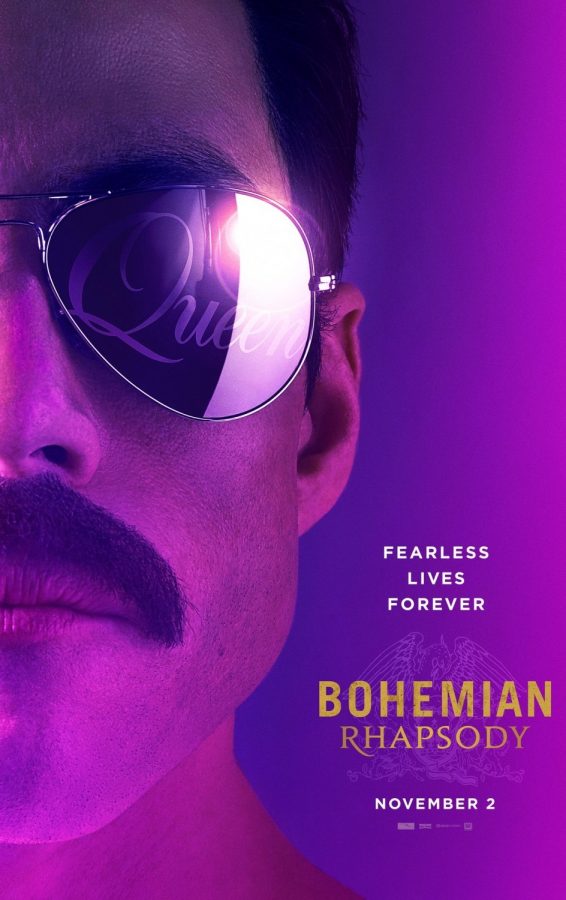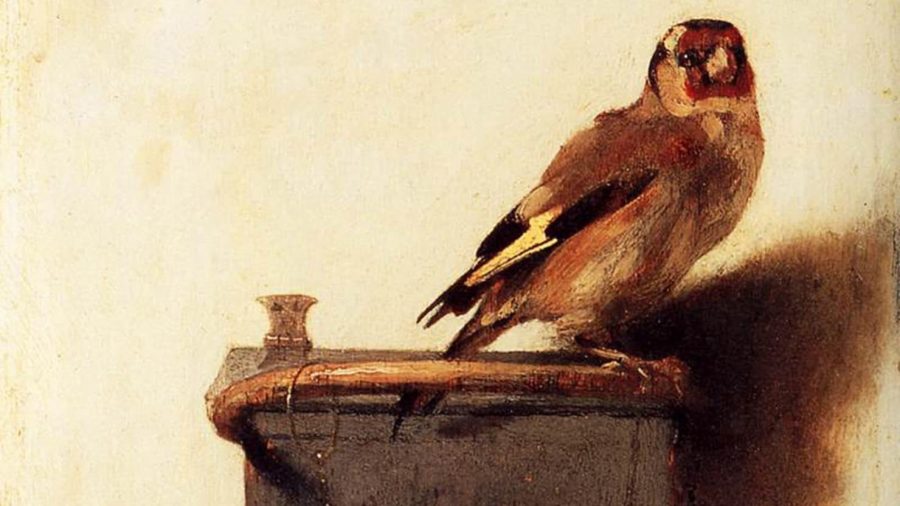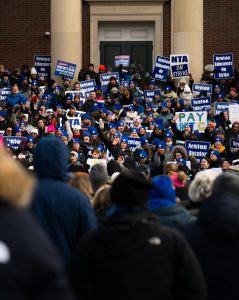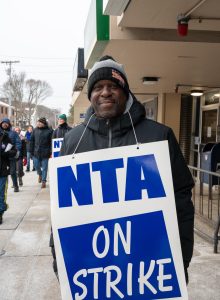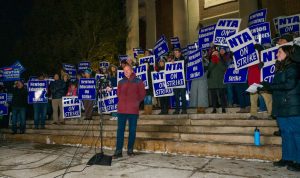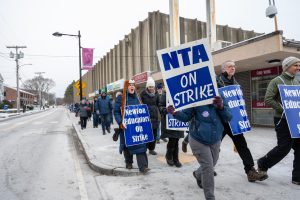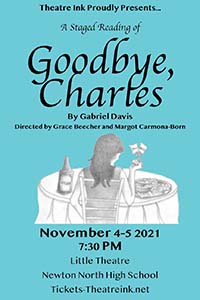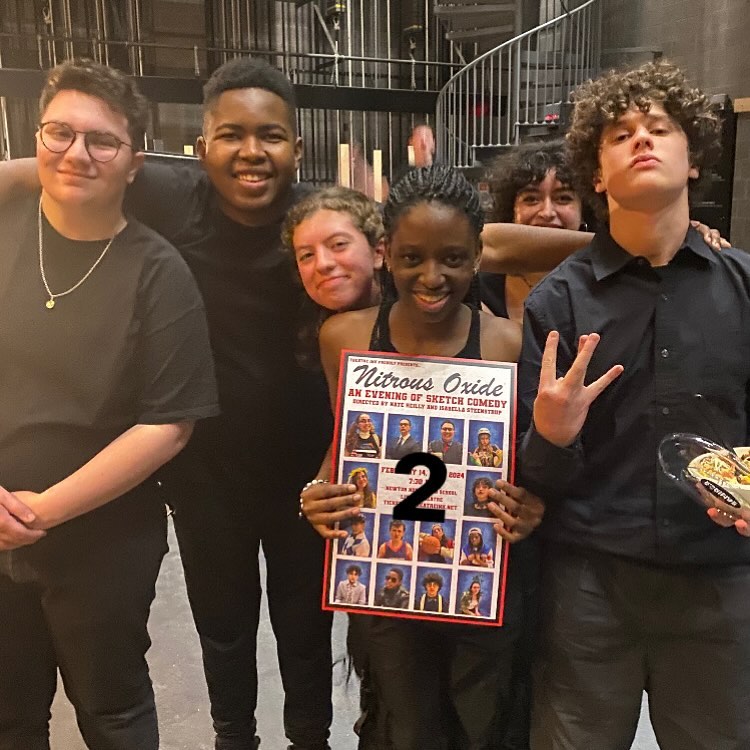by Malini Gandhi and Fatema Zaidi
Two thousand nine hundred seventy seven faces, 1,050 backs, 298 fingerprints and 350 slivers of blue sky. Each of these photographs delve into and look beyond the September 11 attacks, capturing a sense of hope, unity and faith in the human condition, according to photography teacher Ron Morris.
The few dozen photographs that are on display at various locations throughout the school during January and February represent just a small sample from the thousands of photographs taken by photography major I, II and III classes as part of a four-month long project entitled “Beyond 9/11.” The project’s goal is to communicate, without words, the powerful mark left behind by the September 11 attacks.
Morris said he first came up with the idea to embark on what he deems an “incredibly ambitious project” while listening to the radio over the summer.
“I was listening to a radio program about September 11, and somehow it just spurred the idea. The 10th anniversary of September 11 was coming up, and I wanted to somehow commemorate the event by launching a group project where a huge number of students were talking, deciding, taking photographs and hanging pieces,” Morris said. “We’ve done partner projects in the past, but nothing this big—nothing like this.”
According to Morris, the first, most important and most time-consuming part of the process was brainstorming,
“We had lots of ideas. What did we want people to get out of the exhibit? What message did we want to portray? What form would it take? What physical things would we be photographing? At least a month was spent researching and brainstorming,” he said.
Months after Morris came up with the idea for the exhibit, the photography room is still strewn with evidence of this drawn-out intricate brainstorming process: dozens of pieces of over-sized manilla construction paper lie on the tables. Some, entitled “Word Association,” are covered with words like “unity,” “devastation,” “fear” and “revenge,” while others, entitled “images,” contain words such as “skyline,” “Flight 93” and “staircases.” Morris fingers each paper fondly and lays them out in order, tracing the creative process from a jumble of thoughts and emotions strewn to concrete, practical ideas.
Sophomore Lee Guekguezian said that the drawn-out brainstorming process could be “frustrating at times.”
There are so many different perspectives and so many different ways of looking at the event, and it was difficult to agree for the photography classes to decide on a common theme. We wanted to portray both the bad and the good aspects of the legacy of September 11,” Guekguezian said.
But ultimately, after playing around with various potential pathways, the classes came together and decided on “unity” as a central message, according to Morris.
“We wanted this project to not be directly about terrorism or specific people that died in the attacks, but rather about what we should take from the event and how we should use it to move forward,” he said. “And ultimately, our idea of what people should take from September 11 was a sense of unity.”
The large number of students working on the project meant that “it was hard to agree on one particular way of depicting unity, and so the project ended up having many parts,” Morris said. Each student was required to take photographs of 100 faces, 30 backs and 10 blue skies, images that the classes highlighted as representing unity.
According to senior Sam Schwamm, a student in the major II class, as he sought out subjects for his photographs he “drew inspiration from the thought of attempting to capture an event that I have little memory of, but that has affected our country and our culture so greatly.”
One of the photography major I, II and III’s contributions to “Beyond 9/11” is a selection of the faces and blue skies that currently hangs from the ceiling near the main entrance on thin strings. The photographs are printed on large rectangular paper, with a photograph of a face printed on one side and a photograph of sky printed on the other side. They dangle from the ceiling and turn slightly in the breeze as the main entrance doors open and close, alternating between face and sky.
This display is raw, revealing and very human: one photograph depicts an old African American man with a newsboy cap and white stubble, while another shows a woman with high cheekbones, eyes crinkled at the edges and large curly hair that throws criss-crossed shadows onto her face. The photographs of the sky are all brilliant and blue, some scattered with white, others revealing the top of a telephone pole or the edge of a roof.
Schwamm said that the snippets of faces and sky portray the profound theme of unity.
“The faces show the diversity that we have in our community, but they also show what we have in common as human beings. The blue skies represent the clear blue sky of September 11, which portrays a sense of hope.”
Senior Katharine Nash, a student in the major III class, also drew the seemingly paradoxical connection between diversity and unity.
“The faces I chose represent that everyone effected by this event was different, but still the same. We all have different faces, but we all have a face.”
 [/media-credit]
[/media-credit]
- Photographs of peoples’ backs will be featured in the main entry way until February.
In contrast to the hanging faces and skies, the photography major I, II and III’s photographs of the backs, which are lined up against a wall near the main entrance, are closed, unsure and questioning. A woman with a jean jacket, leggings and cropped brown hair slumps in front of a wall plastered with store logos; a man in a sweaty white T-shirt stands facing a brick building; a woman with curly hair and a trench coat stands on a wooden floor flecked with paint ; and an old, thin woman in a too-big sweatshirt and tennis sneakers stands politely in a clean kitchen. Their faces are obscured. All the viewer knows of them is the shape of their shoulders, the way they hold themselves and the shadows their arms cast on the ground.
Schwamm mentioned that the backs were intended to accomplish a similar goal regarding the diversity of humans, but he said the “they are more anonymous, and emphasize something more ambiguous.”
Morris saw the photographs of backs as providing a commentary on “how we judge people.”
The final part of the project is hundreds of enlarged images of fingerprints plastered in a zig-zag pattern over the windows in the hallway going down to the theatre entrance.
The interpretation of the fingerprint image varies from person to person. Morris asserts that, like the backs, the fingerprints represent a disconnected stamp of judgment, while Nash sees the fingerprints as a common, unifying characteristic amongst humans.
These varying interpretation demonstrate just how intricate and personal the process of looking at an event, creating symbols and communicating a message can be. For this reason, Morris admits that it was a very difficult project.
“It took forever—a lot longer than we thought it would, but that’s part of the process of working in a group. It was a very ambitious project, and I know the pitfalls of it now,” Morris said.
According to Schwamm, the hardest part of the project, for him as a photographer, was getting peoples’ permission to take their photograph.
“Frankly, many people do not want to have their pictures taken. Some people rudely refused, but most just came up with an arbitrary excuse or walked away. This was probably the most frustrating part for me,” he said. “The first attempt I made at shooting the assignment, I was rejected by probably 70% of the people I asked.”
Despite these challenges, Schwamm hopes that people take a look at the exhibition and stop to think about what September 11 means.
“I just hope that this assignment, which both photo major classes have spent a lot of time and effort completing, forces people to stop for a second and think about what September 11 means to them. If nothing else, I hope that our photographs make students consider that they live in multi-dimensional world in which there is more than one way to look at things,” Schwamm said.
Guekguezian also cited the photographs as powerful symbols that are important to be displayed in the school.
“We ended up putting the exhibit up a little while after the 10th anniversary, but I think that this makes it even better. The negative outcomes and the positive, unifying effects of the event never go away just because the day of the anniversary passes. Having the photographs continuously on display throughout the school acts as a constant reminder of what this day means, making sure it is not completely forgotten.”







